
Hello there, welcome to what by now can be called as the “Year of Hasegawa”, as I present to you: the fourth basically straight article on this website about Hasegawa kits in like what, five months? It started with the little orange egg known as the Honda Civic, then the Toyota Starlet, followed by the Mitsubishi Lancer(article coming soon) and now the ’87 Bluebird. This one, though, I’d been awaiting since pre-ordering it in early May, midway through the COVID-19 pandemic as a little beacon of light and happiness. Why? Well, for some inexplicable reason, and I am fully aware how unrealistically silly this sounds; I love old Nissan rally cars. Not even actual, proper rally cars, no, no. I’m talking about the four doors that have no right or reason to do as well as they did off-road like this one, for instance. But together with the Subaru Legacy and the Mitsubishi Gallant, the Bluebird did have some decent rally success. It also helps of course that its roots, its genuine heritage from the sixties is also just totally slathered in rally slickness. But why, let’s run down this avenue before continuing, why would Nissan develop a rally version of their by this point bread and butter basic-bitch sedan? Well, ATTESA is the answer. It stands for “Advanced Total Traction Engineering System for All-Terrain”, which in its acronym version sounds like a sassy mother’s name from the United Kingdom but I digress.
So, ATTESA essentially is a hybrid four wheel drive, it quite literally activates the rear wheel drive only when necessary, all mechanically at the time of its introduction in 1987, though honestly – it may as well be wizardry, I honestly have no clue. It of course saw electronic assistance growth like, within a year and a half from being introduced, granting the newer models things like always-aware torque-control and dynamic differential settings. Granted, I am explaining this as simple as I can as the nature behind ATTESA very quickly and rapidly degenerates in the terms differential, torque and four wheel drive being slung around and used like you get paid per word usage. There’s a whole lot more to it, but just roll with the concept that it’s a very useful bit of tech that eventually ballooned into allowing the 2007 Nissan Skyline GT-R(R35) to be as powerful, deft and quick as any other supercar though it only costs half as much. That, mostly because of the now completely computerized and damn near equipped with space-age technology ATTESA ET-S system.
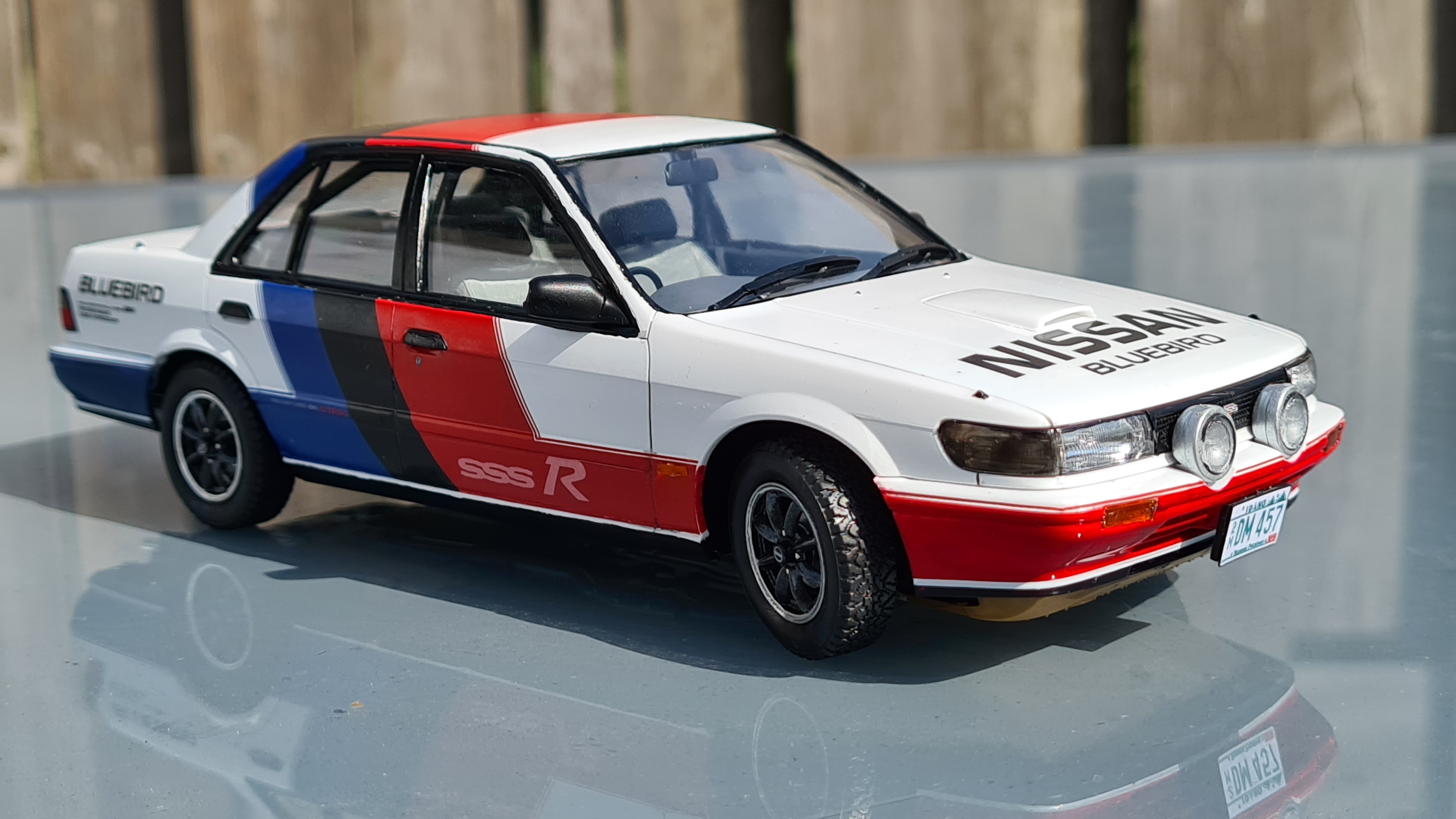
Now, back to 1987. So imagine this, the new Nissan Bluebird U12 in unveiled in September of that year, to actually quite a large hyped up crowd. It immediately gets sold like utter craziness, just like any mainstay vehicle of a Japanese manufacturer does, it gets exported to Europe, Australia and even the US where it gained the name “Stanza”, which much like the anemic nature of American automotive regulations of the day, meant that this Nissan to them was like the mid-noughties Opel Vectra was to us. A sad, dull accountant’s car that looked about as depressingly as it drove. It should be noted though, most Bluebird models in mainland Europe are actually late eighties Nissan Violets with facelifts but every one of the wagon varieties were actual Bluebirds. And as generic as they were, my dad owned a ’89 Bluebird wagon in dull silver in the late nineties and it was fucking flawless. It was pristine, even when handled like garbage it just wouldn’t break. High revs? The inline four dealt with it like a patient mother. Slammed the doors shut every time? The trim would, y’know, hold. Bought a Mercedes SEL and parked it alongside? Watch it rust away while the Bluebird lives on forever. The damn things were just legendarily tough, they just wouldn’t rot. In fact, across from where I work sits a late eighties Bluebird that still has the decal discoloration of once having been a taxi and it gets driven daily, looking damn near new if it wasn’t for the antiquated style.
And in all honesty, the Bluebird of the late eighties has this strange timeless look to it. Most Japanese cars do, while the United States was turning every car into the same looking four door or two door with rounded edges and elongated bodies, the Japanese automotive industry was settling in for a long spell of just making reasonable, affordable vehicles. I tend to rag on the US market, a lot, this is true. But you must understand, and if you’re an American yourself of thirty or older, you’d probably understand why; the vehicles of the seventies and eighties just weren’t very good. Neither were just about any of the European cars, hell you can define half the continent’s countries with one or two words when it comes to cars; Italian car? Mechanical failures. German car? The goddamn electronics. British? “It’ll do”. Swedish? Great, except turbos. Russian? Надежность. Anyhow. For once, I’ll try not to blab on for six paragraphs about the actual vehicle or the history or some tidbit of history in general like square headlights coming to life or Baldwin Motion’s history, stuff like that and actually go to the model kit in question. So as it turns out, Hasegawa is still capable of churning out anywhere between four and six new tools a year by this rate, of which they make like three ‘editions’, like year variations, unique editions and sometimes race liveries. It’s Hasegawa’s hard work that makes me realize that a fair few of the model enthusiasts out there are just full of unadulterated shit, pardon my French.
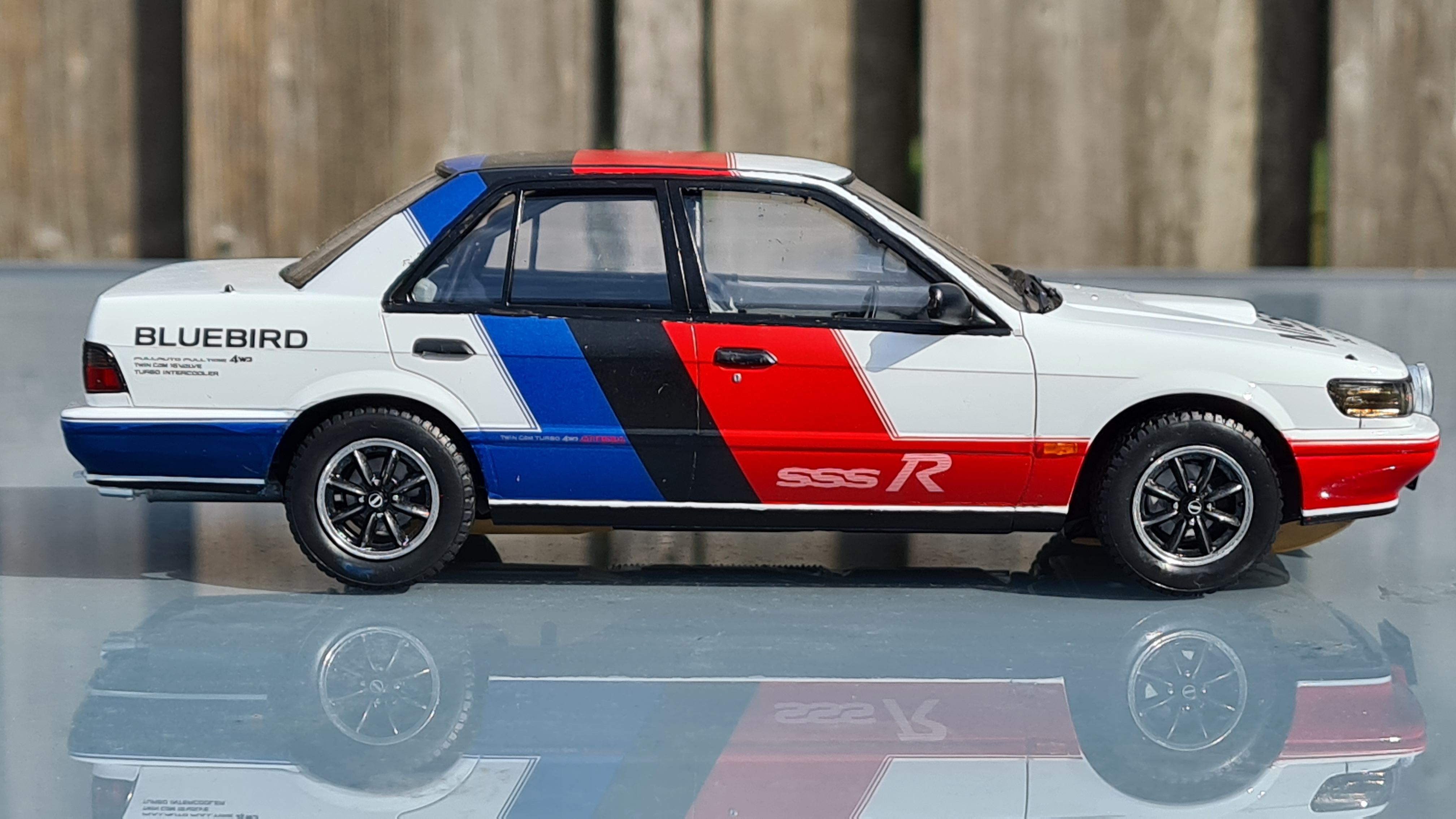
Every two or so days apart I read yet another forum post, another Facebook message or something in that vein of a supposed expert(granted, modeling for half your life, I’d argue, makes you actually a fair bit of an expert), where it either heads down one of two roads: new tools completely and utterly bankrupt companies and we should be grateful like it’s a gift from God that we got one, while road two is a even more baffling one where when we do get a new tool from the companies who according to these people go bankrupt if they do pump money into a new tool model kit, it’s a heinous, inaccurate pile of garbage not worthy of your time or money. I’ll leave that rant where it is and eventually carry that shitty torch again in the soon-to-come ’69 Chevelle article where I’ll continue ranting on about how the use of LiDAR and whatnot is the future and the concept that calling Chinese production a bunch of communists who can’t handle plastic injection cause “they’re cheap labor” and everything should be made domestically is not only laughable, it’s flat out silly with the way it all is put together these days.
The Bluebird SSS-R is Hasegawa’s second kit of their ’86-’89 Bluebird series, with the third one that’s coming up in a few months being the Calsonic #33 All Japan Rally championship car from ’87, which is gonna be a beauty I reckon. As it stands, of all the Historic Cars series kits I’ve built, this one is the most complex but also the most satisfying to put together by a long shot. The rally goodies that make this kit unique to the regular SSS are actually really, really nice. I wish Revell would take these hints and put in some chunky fuckin’ tires in their kits already, the non-descript chunky all terrain tires that come with this kit are some of the nicest I’ve ever seen in a kit, ever. Deep, rugged profile, solid feel to them and you know they’re quality that from one glance you can tell they’re all terrain tires, regardless of the car they’re under. Another thing that I adore about this kit is rally lamp set-up; in just about any other kit, you’d get a one piece set of lamps with separate glass. In this case, just like the real deal, you get them in three pieces: the glass, the lens lid and the housing themselves, so you can see the actual ridge in them on which you click the little plastic protector caps just like in real life.

The downside? Well, it would’ve been ever so much better if they were colored chrome by default, given you get a chrome tree to begin with. The third thing I really like about this kit and Hasegawa kits in general is the tail and headlight assemblies. I like to think that the lights make a car, it’s one of those things that can be a dead giveaway that you’re looking at a cheap toy or a faithful miniature of the real deal, and Hasegawa always goes the extra mile to ensure it looks good. The headlight and indicator glass are separate, which is a damn godsend on account of it having very, very tinted glass in the indicators. The tail light could’ve been one of those just paint the sections and be done with it thing like the Toyota Starlet but again, they went the extra mile and give you the indicator glass, the reverse light, the chrome buckets and then the glass to cover them so you can properly tint the plastic with smoke to mimic the real car’s super dark tinted tail lights. Everything about this kit just screams, absolutely screams “someone thought of that”, it all has this sense of supreme quality control with not just the perfect fit of damn near every part, but also the complexity of all the pieces so you can easily get the super high detail without having to do some modeler wizardry to actually get it looking right. It’s quite literally a in-the-box feature to get as high quality a model as one can get without having to buy a Danbury Mint static display model.
There’s one more downside to this kit, which isn’t the worst but it demands some extra attention. Obviously, they couldn’t give you the whole bumper stripe, so they just deliver the pinstripes for the top edge which has the annoying requirement that allegedly only one type of paint will match the decal, and hooray – even that one doesn’t. Hasegawa, just like every large manufacturer refers to a line of paint codes, though they don’t actually own the line so they kind of vaguely refer to two separate paint lines(Mr. Color and Gunze Sangyo Acrylics) and the colors they refer to for the body(red and blue) are gloss, yet they also quite literally warn you not to clear coat the decals as the decal type they use is hyper reactive to any type of acrylic and lacquer clear coats. So the bumper colors will barely, if at all match the decals and even then, the paint on the bumper will likely be twice as shiny as the rest of the car. It’s a little niggle but it definitely is something to keep in the back of your mind. The main body decals however, they settle like the best of them. They’re thick, solid yet perfectly malleable and adhere to the body with some Decal Soft from any type supremely well. They could’ve done with a white stripe for the bottom of them so you don’t have to awkwardly position it a fifth of a centimeter over the black lower trim, they give you stripes for the lower bumpers after all. But alas, that’s just a small bit of feedback that could make this kit all the more better in the future and I’ll be perfectly frank; this kit is fuckin’ brilliant.
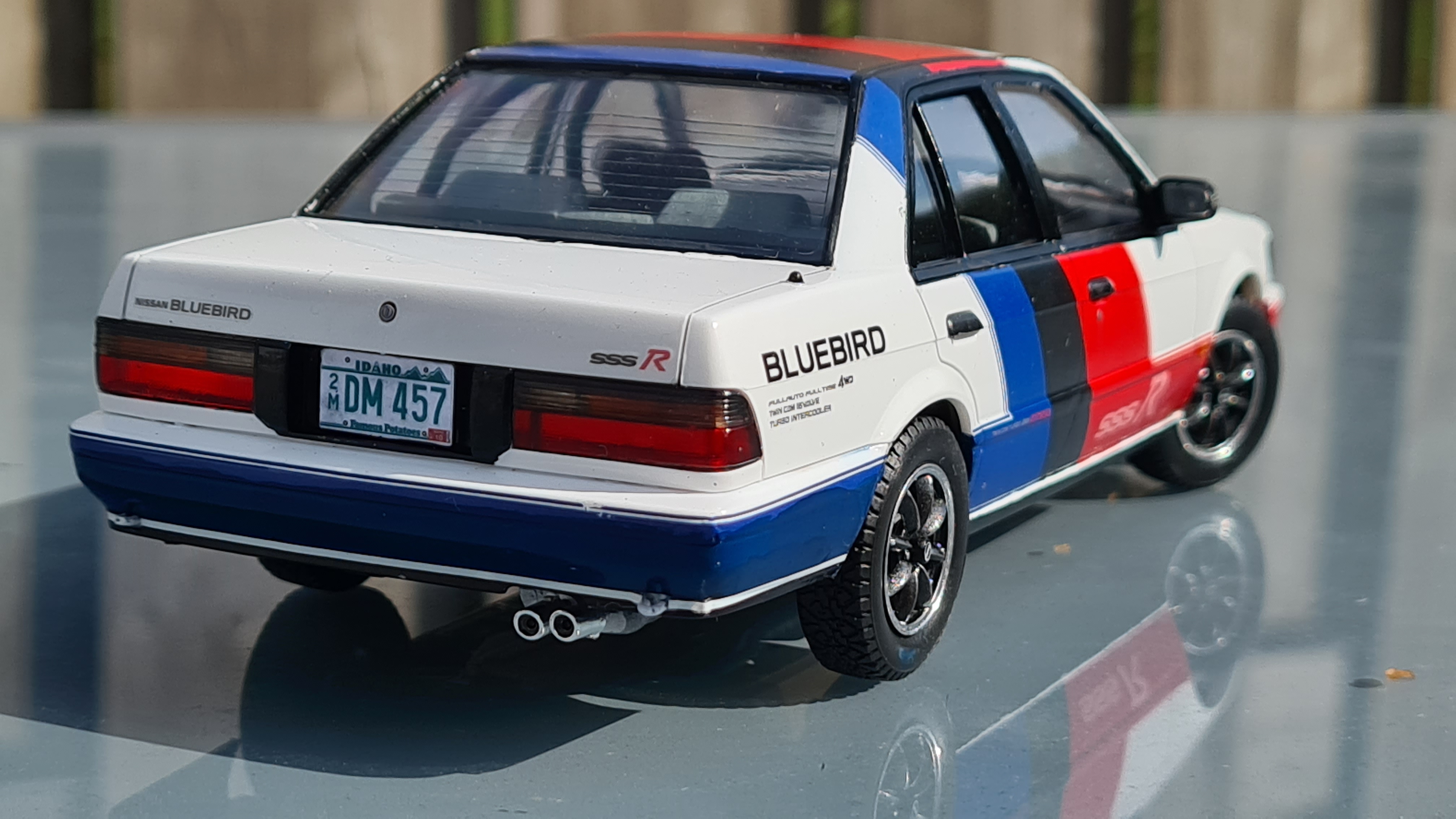
For some reason or another, I ran with a set of Idaho plates I had for a ’87 Buick GNX and made spares of. It’s a proper Japanese car with the steering wheel on the right, it likely would never have seen a drive on US soil, nevermind this particular version but I figured, why not. It matches the others after all, the Starlet has ’88 Maryland plates and the Civic had ’74 South Dakota plates, might as well make it consistent. But I swear, these kits are just unmatched in all respects other than the engine bay, and I hope one day Hasegawa will retrofit or make engine bay kits available, or maybe Hobby Design will take the resin lead on that particular front to make this already damn near perfect kit even more perfect. I cannot recommend these Hasegawa kits enough, they’re all just spectacular. Some are better than the others but this one is just at the very top of that particular peak. Next up, another motorcycle by Tamiya and then maybe, just maybe something more American again. Until then!

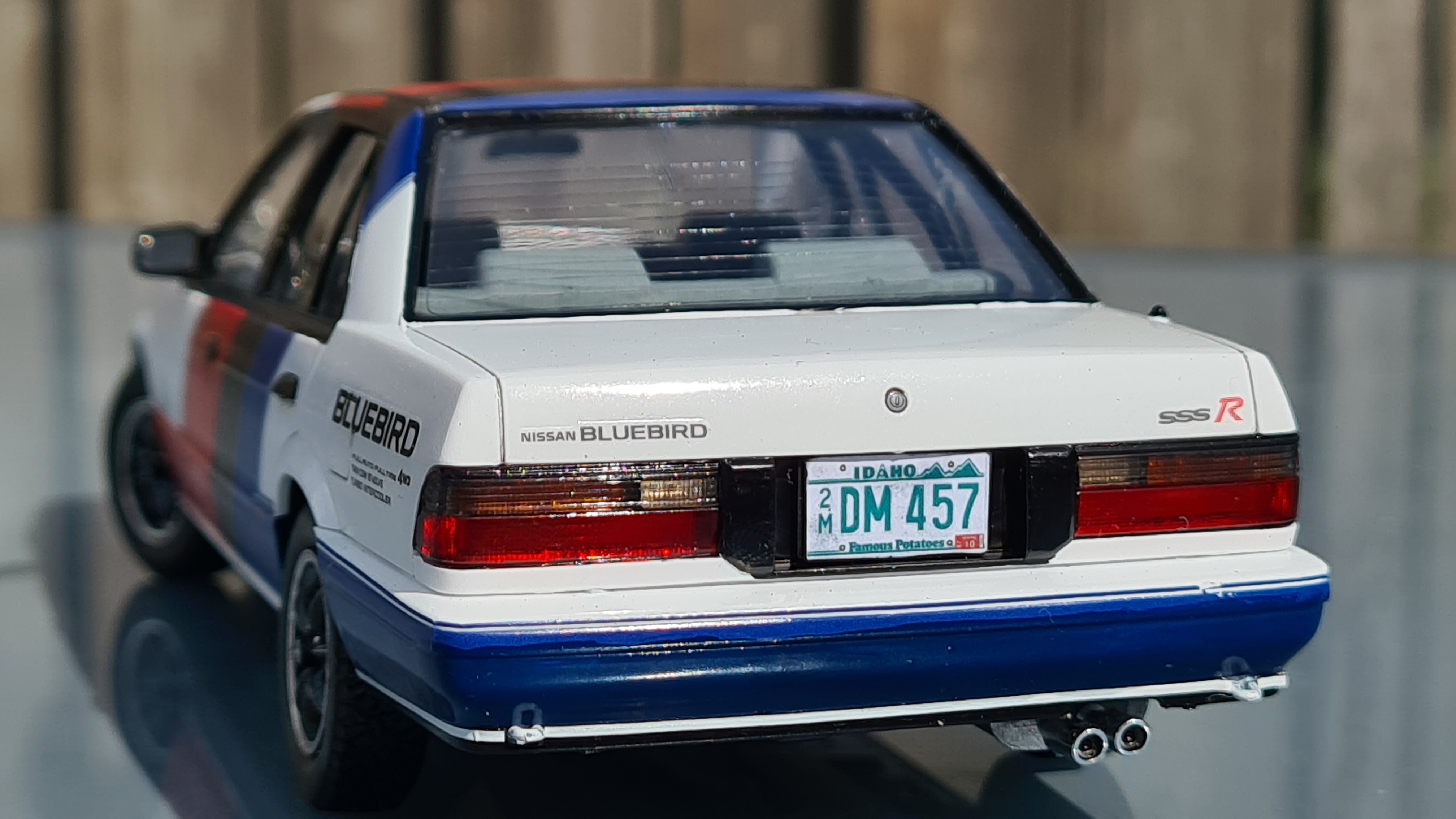

















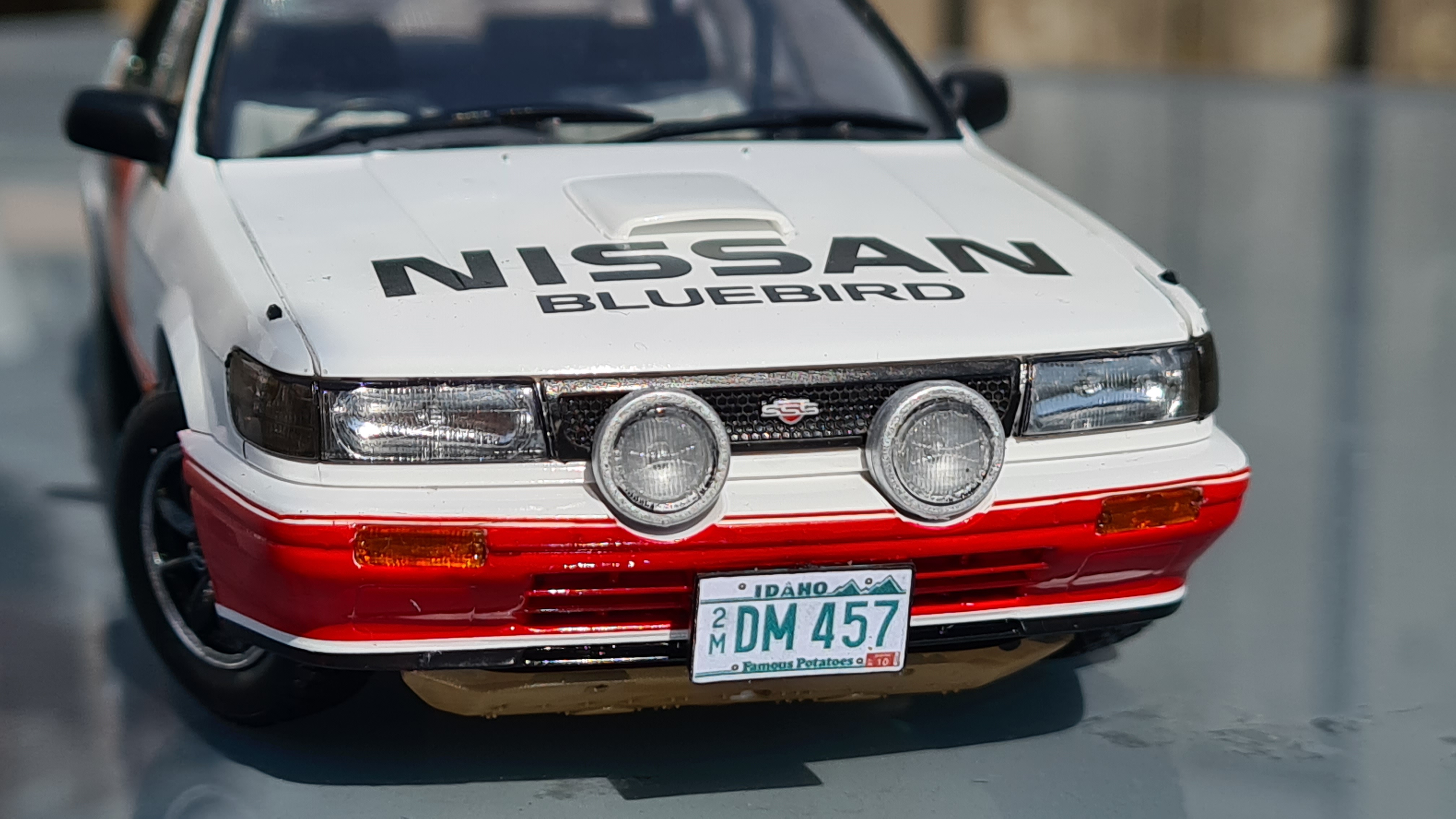

’87 Nissan Bluebird(U12) SSS-R specifications:
Kit: HC Series #35
Skill Level: N/A
Parts: 146
Molded in: White, Gray and Black
Scale: 1/24
